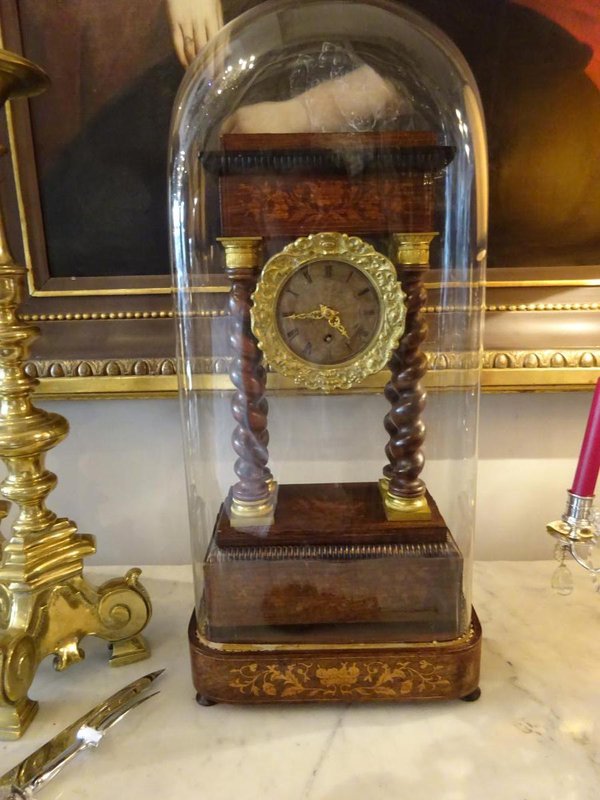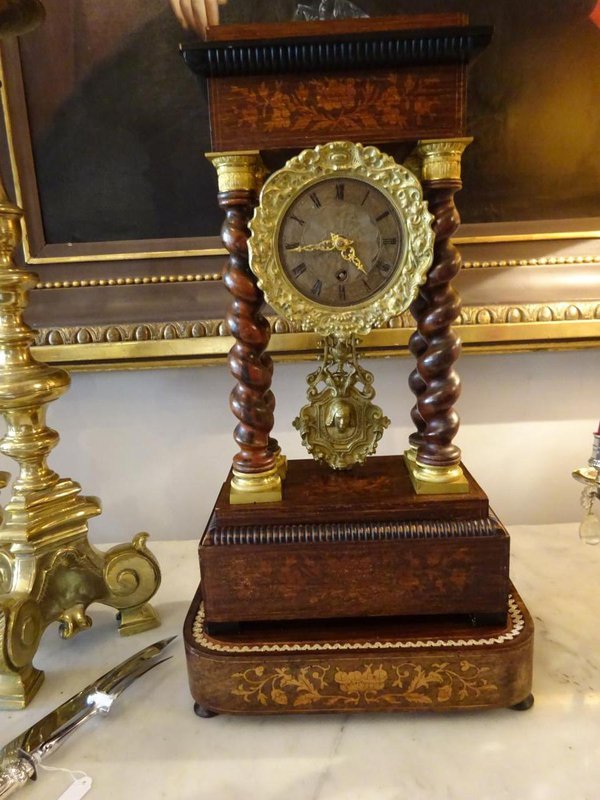The AHS Blog

Dreaming of a clock in the slums of Paris
This post was written by Peter de Clercq
Every clock that left the workshop or factory on its way to a buyer has, we may assume, been coveted by and, we may hope, given satisfaction to its owner. But most of this goes unrecorded, and where traditional non-fiction sources are silent, we may find some glimpses in fiction.

For vivid descriptions of the life of the workers in nineteenth-century France one can do worse than turn to the wonderfully naturalistic novels of Emile Zola (1840-1902).
The book that shot him to fame in 1877 was L’Assommoir; below I quote from the most recent English translation: The Drinking Den , Penguin Classics 2000 rev. 2003, translator Robin Buss.
The novel depicts in graphic style the rise and fall of Gervaise Macquart, who worked as a laundress in Paris during the period 1850 to 1870. There are scenes of abject poverty and alcohol is a key character in the story; but there are also comical scenes and uplifting passages. It is a masterpiece. As one author has put it:
‘L’Assommoir is set in the dirt and filth of working class Paris, where life was hard and lives depressingly short. He researched in great detail the impoverished quarter of which he wrote, so that the work is an ethnographic novel and probably the first of its kind’.
In the poor household of the young Gervaise, a chest of drawers takes pride of place:
‘One of her dreams, which she did not dare mention to anyone, was to have a clock to put on it, right in the middle of the marble top – the effect would be quite splendid. Had it not been for the baby that was on the way, she might have risked buying her clock, but as it was she put if off until later, with a sigh.’ (p. 97).
Three years go by before she is able to act on her desire:
‘She had bought herself a clock; and even then this timepiece, a rosewood clock with twisted columns and a copper gilt pendulum, had to be paid off over a year, at the rate of five francs every Monday. She got cross when Coupeau [her husband] said he would wind it up, because only she was allowed to take off the glass globe and religiously wipe the columns, as though the marble top of her chest of drawers had been transformed into a chapel. Under the glass cover, behind the clock, she hid the savings book. And often, when she was dreaming about her shop, she would sit there, miles away, in front of the dial, staring at the turning hands, for all the world as if she was waiting for some particular, solemn moment before she made up her mind.’ (p. 108).


The ‘dreaming about her shop’ refers to her ambition to make herself independent and set up her own laundry, which indeed she eventually manages to do. Life looks good, she even entertains a large group to a celebratory dinner in the laundry shop.
But it was not to last, and as her life goes in a downward spiral, Gervaise is forced to bring one possession after another to the pawnbroker. She puts a brave face on it:
‘Only one thing broke her heart and that was putting her clock in pawn, to pay a twenty-franc bill when the bailiff came with a summons. Up to then, she had sworn she would starve rather than part with her clock. When Mother Coupeau [her mother in law] took it away in a little hat box, she slumped into a chair, her arms dangling, tears in her eyes, as though her whole fortune had been taken away’. (p. 279).
There is more horology in this novel. She also has a cuckoo clock, which would have been a much less valuable object, but it is never described in detail. Neither is the watch which only once makes an appearance, on the day that she is forced to put it in pawn as well:
‘The little knick-knacks had faded away, starting with the ticker, a twelve-franc watch, and the family photographs.’ (p. 384).
There is also a watchmaker who plays a small role in the story. In the courtyard of the tenement house where she lives are various workshops and shops, including – for a while – her own laundry shop:
‘At the bottom of a hole, no larger than a cupboard, between a scrap-iron merchant and a chip shop, there was a watchmaker, a decent-looking gentleman in a frock-coat, who was continually probing watches with tiny tools, at a bench where delicate things slept under glass covers while, behind him, the pendulums of two or three dozen tiny cuckoo clocks were swinging at once, in the dark squalor of the street, in time to the rhythmical hammering from the farrier’s yard’ (p. 134).
Literary critics may argue that in fiction, clocks and watches are often introduced as symbols, and that therefore novels do not necessarily give a realistic image of the ownership of clocks and watches.
Be that as it may, the story of the struggling laundress Gervaise Macquart, who dreamed of owning an ornamental clock and managed to bring one into her poor home, only to have to part with it again, feels very real indeed.
